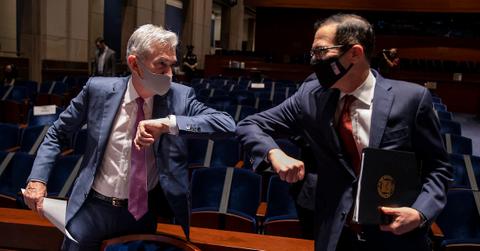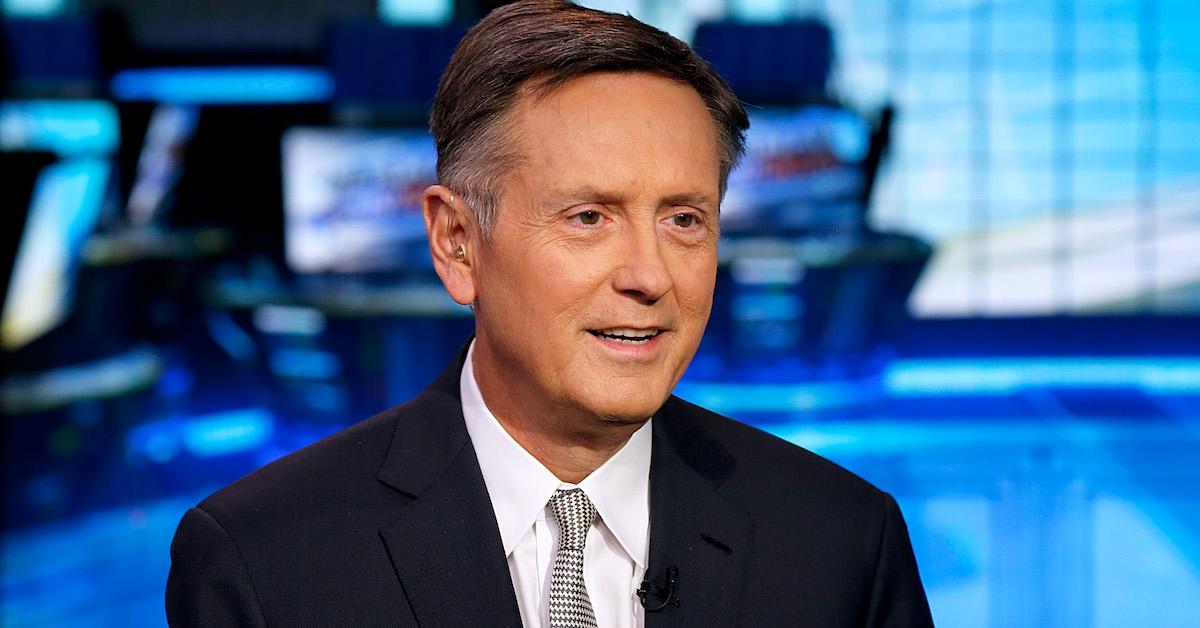Goldman Sachs Predicts Interest Rates Won't Rise Until 2025: What It Means to You
Goldman Sachs predicts that interest rates will remain low until 2025. Here's what happens when the Fed lowers interest rates and what it means to individuals and big businesses.
Sept. 1 2020, Updated 1:56 p.m. ET

In the early days of the COVID-19 pandemic, the Federal Reserve lowered interest rates to nearly zero to forestall an economic collapse, which indicated that rates would remain low until the central bank felt “confident that the economy has weathered recent events and is on track to achieve its maximum employment and price stability goals.” Now, given current unemployment rates and Federal Reserve Chair Jerome Powell's statements last week, Goldman Sachs predicts such confidence won't inspire the Fed until at least 2025.

Federal Reserve Chairman Jerome Powell
What happens when the Fed lowers interest rates, and why should it matter to you? That depends entirely on whether you are an individual consumer, business owner, or lender. Let's explore why the Federal Reserve raises or lowers interest rates in the first place, the effects of lower interest rates, and the possible consequences of keeping rates low for such a prolonged period.
What happens when the Fed lowers interest rates?
Typically, when the Fed lowers interest rates, it signals that economic growth is slowing. Lower interest rates encourage more qualified borrowers to take out loans or open new lines of credit. For consumers, this can result in more home-purchasing power if they are looking to mortgage a new home or refinance an existing mortgage. Typically, however, the lower interest rates drop, the more conservative lenders become regarding approval.

While consumers with good credit and steady income can benefit from the Fed lowering interest rates, the biggest beneficiaries of a rate cut are business owners. One of the primary justifications for adjusting interest rates down is that it encourages companies to take out loans to grow their business. Ideally, this results in more jobs and therefore lower unemployment.
Unemployment in 2020 peaked in April at 14.7 percent, the highest it has been since the Great Depression, which saw nearly 25 percent of Americans out of work in 1933. By July, the jobless rate had fallen to 10 percent. However, the number of those unemployed for 15 to 26 weeks rose by 4.6 million to 6.5 million, according to the Bureau of Labor Statistics, which signifies that a significant number of jobs that disappeared at the start of the pandemic have not returned and some may never return. Recovering jobs is almost certainly a primary influence on the Fed's decision to keep rates low for the foreseeable future.
Why Goldman Sachs thinks interest rates will stay low until 2025
Typically, the Fed will move to increase rates again as inflation rises. On Aug. 27, Fed Chair Jerome Powell announced that the central bank will seek to target inflation that averages 2 percent over time, much higher than it would allow historically. Based on this decision and the current unemployment rate, Goldman Sachs researchers concluded from the announcement that "an aggressive average inflation targeting policy would keep rates very low for a long period of time and would return inflation to its 2 percent baseline in about a decade.”

Fed Vice Chair Richard Clarida in a December 2019 appearance on Fox Business.
However, one detail that remains unclear to analysts — and to the Fed, it seems — is how the central bank plans to offset this prolonged period of near-zero fed rates. While there is speculation that the Fed may purchase more bonds and mortgage-backed securities to help lenders finance more loans, Fed Vice Chair Richard Clarida has indicated that the Fed is adopting a "wait and see" approach. The Fed will revisit that question when the economy's recovery is on track.
